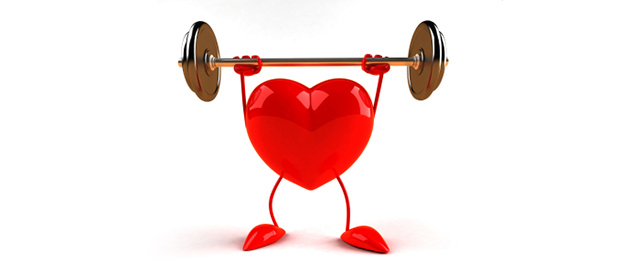
Ah, cardio! In other words, anything over five reps. My favorite forms of cardio include deadlifting for between 20 and 50 reps per set, one-arm rowing heavy dumbbells for 20+ reps, and loading atlas stones to a platform or my shoulder for as many reps as possible.
If that doesn’t sound like anything remotely resembling something you’ve considered cardio before allow me to explain. In short, we’ve learned that the commonly held belief that there is a dichotomy between resistance training and cardio is completely false. In reality, these systems overlap and in the gaps between intense exertion you have, essentially, “cardio.” Or what my wife, Jen Sinkler, has been credited has having coined “Lifting weights faster.”
After my email yesterday about the amount of distress I was under during the Lift Weights Fasterlaunch a few people emailed me and asked how I can reconcile the idea of doing circuit workouts with set time or rep frames and the idea that you should be doing exactly what is best for your body. It’s a great question and I’m glad that some people reached out so that I can expand on it for everyone.
The type of strength training I advocate is primarily eustressful. If you’re not familiar with the term it is colloquially considered “good stress” but we use a more useful definition: stress that is easily resolvable. On the other hand, distress is stress that is not easily resolved. Another way to say that is that distress has a high cost, whereas eustress has a low cost.
While I absolutely hold that you should be optimizing for the maximal effective amount of eustress training, a minimal effective amount of distress training is also important.
The reason why is a matter of adaptability and specificity. Specifically, if you never ever train in distress you will not be able to handle any amount of distress. However, if you train a minimal amount relative to your needs, you’ll be better equipped to handle a distressful situation. The more distress you are likely to encounter in sport or life, the higher your minimal effective amount is.
Throwing in an untested, potentially distressful circuit at the end of a workout on occasion provides you an opportunity to train for the position you might find yourself in. Sometimes you just don’t have a choice and you need to gut it out, whatever it is. Training that ability is exactly what you’re doing when you grit your teeth and keep going in a tough conditioning workout.
I don’t usually particularly enjoy conditioning workouts, but I recognize the necessary role they fill.
A primarily eustressful training model combined with a minimal effective amount of distress training is a recipe for unparalleled success.
Which is why it’s the exact model we use at my gym, The Movement Minneapolis. In fact, for the past 6 months my members have unwittingly been the guinea pigs for over a hundred of Jen’s Lift Weights Faster workouts. Doing so gave us an unparalleled sample size to tweak and tune the workouts so that they’re just right.
I can’t say enough good things about the library Jen has put together. It’s absolutely massive, and comprehensive:

Whether you love that a quick circuit workout can provide a great stand-in for a more traditional strength workout, don’t have the facilities or equipment for more involved workouts, or like me, simply recognize the necessity for a little heart-pumping lung-burning action you will love Lift Weights Faster.
And if you’re stuck, frustrated with a lack of progress and need a complete overhaul of your training you might want to pick up Get Stronger Faster while the opportunity lasts. During the launch special it is being offered as a $29 add-on to Lift Weights Faster which is something I only did as a favor to my lovely wife! Afterwards, I will be offering it alone at a higher price.
Today is the last day of the 50% off launch sale, so grab it while it’s on sale.
Taken together, these two programs are as close as you could get to training at my gym without setting foot on Minnesota’s frozen soil. Call me biased, but the results I get for my clients who range from people lifting their first dumbbell to athletes at the highest levels of their sport speak volumes about the efficacy of what we’re doing. It’s certainly unconventional, but perhaps that’s exactly why it works.


Leave a Reply